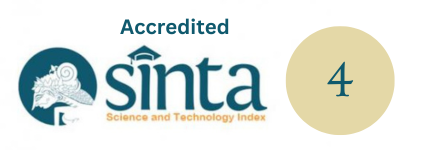Musical Creation: Aku dan Kamu Bukan Kita | Kreasi musik: Aku dan Kamu Bukan Kita
DOI:
https://doi.org/10.59997/jurnalsenikarawitan.v2i3.1278Keywords:
innovation, balinese karawitan art, soloist, tingklikAbstract
The new karawitan artwork entitled "I and You are Not Us" means that the appointment of me (the stylist), the audience (you), and us (not us) is a difference in interpretation, appreciation, and understanding of each individual who enjoys this work. This means that in this life, we must be aware of differences in principles, perceptions, perspectives, and treatments in life. Differences are beautiful and do not have to be uniform. We must accept and respect each other's differences, because differences are enrichment that can be used to complement each other and fill each other's shortcomings. The creation of this work aims to display a new color in Balinese karawitan art, which has always been played in groups with each person playing one instrument. This is different from this new work, which in its presentation uses one instrument, played by one player. This soloist music presentation was developed from the tingklik instrument by adopting the playing techniques of various traditional Balinese percussion instruments. The creation of a new musical art work, "I and You are Not Us", is done using the creation method proposed by Wayan Senen, namely through the initial stimulation process, followed by the process of implementing ideas using the creation process proposed by Halma Hawkins, through the exploration stage, improvisation, and shaping. The innovation of this new karawitan art that is played as a soloist develops the technique of playing the instrument, which is adopted from various percussion instruments in Bali.
Downloads
References
Bandem, I. M. (1986). Prakempa: Sebuah lontar gamelan bali.
Bandem, I. M. (2013). Gamelan Bali di Atas Panggung Sejarah. Badan Penulis STIKOM BALI.
de Fretes, D., & Listiowati, N. (2020). Pertunjukan Musik dalam Perspektif Ekomusikologi (Vol. 8, Issue 2).
Direktorat Jenderal Pendidikan Tinggi Kemdikbud RI. (2020). Buku Panduan Merdeka Belajar-Kampus Merdeka.
Elektro Dan Komputer; Janny, E.-J. T., & Wuwung, O. (2014). Rancang Bangun Audio Mixer Yang Dilengkapi Dengan Desibel Peak Meter. )Pembimbing, 1(2).
ERLYNA DIAN A. (2011). Perpustakaan.Uns.Ac.Id, 3–3.
Hawkins, A. M. (1991). Moving from Within: A New Method for Dance Making (M. Louis, Ed.; illustrated). Cappella Books.
Institut Seni Indonesia Denpasar. (2021). PEDOMAN PENULISAN SKRIPSI/TUGAS AKHIR PROGRAM MBKM ISI DEPASAR.
Sebagai, P., Komposisi, M., Pada, B., Musik Kontemporer, K., Made, I., Bhumi, B. P., Komang Sudirga, I., Sudirana, W., Studi, P., Karawitan, S., Seni, I., & Denpasar, I. (2021).
Pluminasi as a New Composition Method in Contemporary Music. Jurnal Seni Musik Nusantara, 01(04). https://doi.org/10.25124/ghurnita.v1i1.391
Senen, I. W. (2014). Konsep Penciptaan Dalam Karawitan.
Suharto, H., & Nurwijayanti, dan K. (n.d.). Perancangan Dan Realisasi Perangkat Audio Headphone Dengan Media Infrared Pada Televisi (Vol. 17, Issue 2).
Widhyatama, S. (2012). POLA IMBAL GAMELAN BALI DALAM KELOMPOK MUSIK PERKUSI COOPERLAND DI KOTA SEMARANG. 59 JSM, 1(1). http://journal.unnes.ac.id/sju/index.php/jsm








